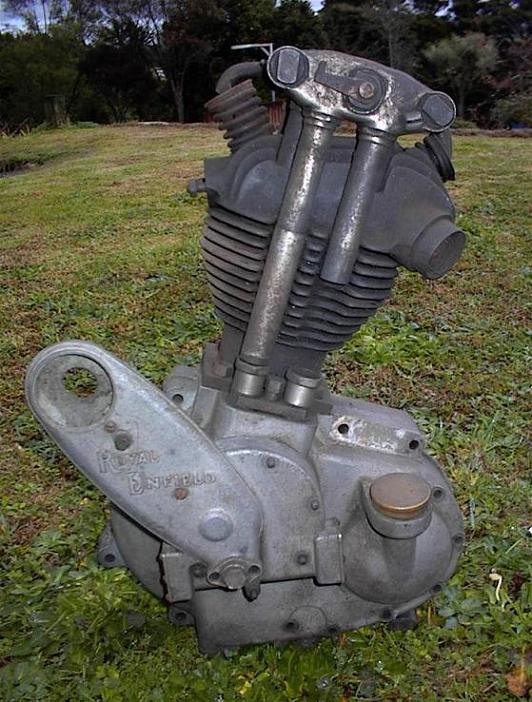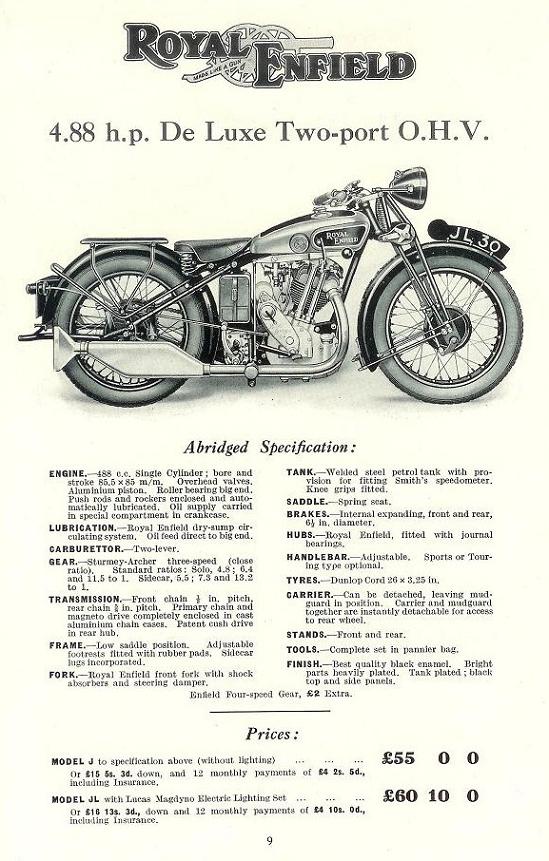Throughout ones life you always hear interesting stories of rare or special finds. You know the ones, the $10,000 plate bought for a fiver at a flea market, a diamond ring found while digging in the back yard, or that very rare 1930s motorcycle (and no not a bloody Brough!!) that the lawn mower man got from a old widow who had it stored in her garage ceiling.
So how many of these stories are really true and then ask yourself “why doesn’t something like that happen to me?” I suppose some of you now are guessing that old McSnotty is going to tease you with some old crap story about his lucky find and that the gods must be looking down on him. Well no! The closest find that I got was purchasing some junk motorcycle that actually looked good, topping up the crankcase with oil when I got home and going to bed (ha! you thought that the oil was going to run straight out the bottom didn’t you. Well it didn’t).
Rising next morning to the squawks of Mrs McSnippy about “the bloody mess on the garage floor” I thought that I had better investigate. And yes, there it was, a pool of my precious amber liquid on the nice white garage floor. But why? Closer investigation revealed an enormous hole that had been patched up with some black bitumen, you know, the stuff they use on the road. As this is petroleum based sitting overnight with oil on the inside it had softened and sometime during the night the engine had pooed everything out. No wonder the bike was cheap but by now not cheap enough! Needless to say the ‘old lady with the broom’ stood guard and supervised the cleaning ritual adding the occasional “you missed a spot”. God I love old motorcycles!!
So where does this lead to in terms of rare finds. Nowhere, but at least I get an audience for my tragic purchase. But I did get a motor once with an interesting history albeit a bit sad, and it goes like this –
In the early 1980s an old Commer van pulled into my driveway and the driver Martene, a person I hadn’t seen for a while, alighted and asked if I wanted a 1930 Royal Enfield 500 engine. Not wanting to appear rude in refusing the offer I listened to the life story of this engine as it was unloaded. It appears that Martene was living in Auckland in an old house that had been made into 2 flats. As with all flats and flatmates lawns and gardens are always a task and inevitably things become overgrown. In this case the gardens were already well out of control and the rear of the property just wasn’t accessible without loosing a lot of skin due to the blackberry. Having lived here for a few years Martene would come and go without paying any attention to the remains of the little wooden shed that lay half exposed through the blackberry in the far corner of the property.
Coming home one Saturday from work Martene was greeted with a dump truck heading out of the driveway with a load of rubbish destined for the local landfill. Sitting half exposed over the top of the tipping board was the top of the motor of the Enfield. Yelling out to the driver to stop, the motor was lifted out, and in doing so the driver commented that had Martene been there earlier he could have had the rest of the bike. However it was now buried at the dump. A quick trip in the Commer to the landfill confirmed this, the bike was gone under tons of crap and all that was left was the motor.
The story of the Royal Enfield was that it and a 1928 Morris Cowley were owned by the son of the then 1930 residents of the house. Come 1939 and the war the son put the Morris on blocks in the wooden corner shed, then dismantled the Royal Enfield and stored it under the bench. Sadly the son never came back from the war so the car and motorcycle sat in the shed for the next 40 years. During this time the parents passed away and the ownership of the property fell to the only other child, a daughter. She lived in the house until she went into care and the house was converted into flats. And the vehicles still sat in the little wooden shed in the corner of the property. As the daughter had never married and had had no children when she passed away the house became the property of the Public Trust. It was at this time the digger and dump truck moved in to clean up the property readying it for sale. If only Martene had been a little nosier towards the little wooden shed in the corner.

So where to from here? Investigations of that particular model revealed that it was produced for 1930 and phased out in early 1931. The upgraded 1931 models having had significant upgrades meant that this was a rare and special model that was worth saving, but starting with only a motor meant that it would be a very long process. An affection for early Royal Enfields and the sporty lines of this model made the decision very easy to proceed with the rebuild however it would take another 14 years of advertising, swapmeets, and bartering to collect the majority of the bike. Simple items like a gearbox and clutch, which were a universal item for similar models proved to just as elusive as the frame and forks.
The petrol tank was the last part of the jigsaw and having no luck in New Zealand it was obtained by chance from a Autojumble when I visited the UK in 1996 to attend the TT (and that is definitely another story in the making).
So where are we at now? Well , not much further actually. With work pressures mounting, and wanting to involve myself in the growing development of the Junior McSnipplets the bike was packed away waiting for that rainy day. However this period of inactivity did allow for the continued collection of pictures, sales data and mechanical information in preparation for when the restoration was to start, and that day is quickly approaching. In the meantime I will leave you admiring the beast in the brochure for the 1930 Model J.

1930 Model J – A truly handsome 1930s motorcycle.
